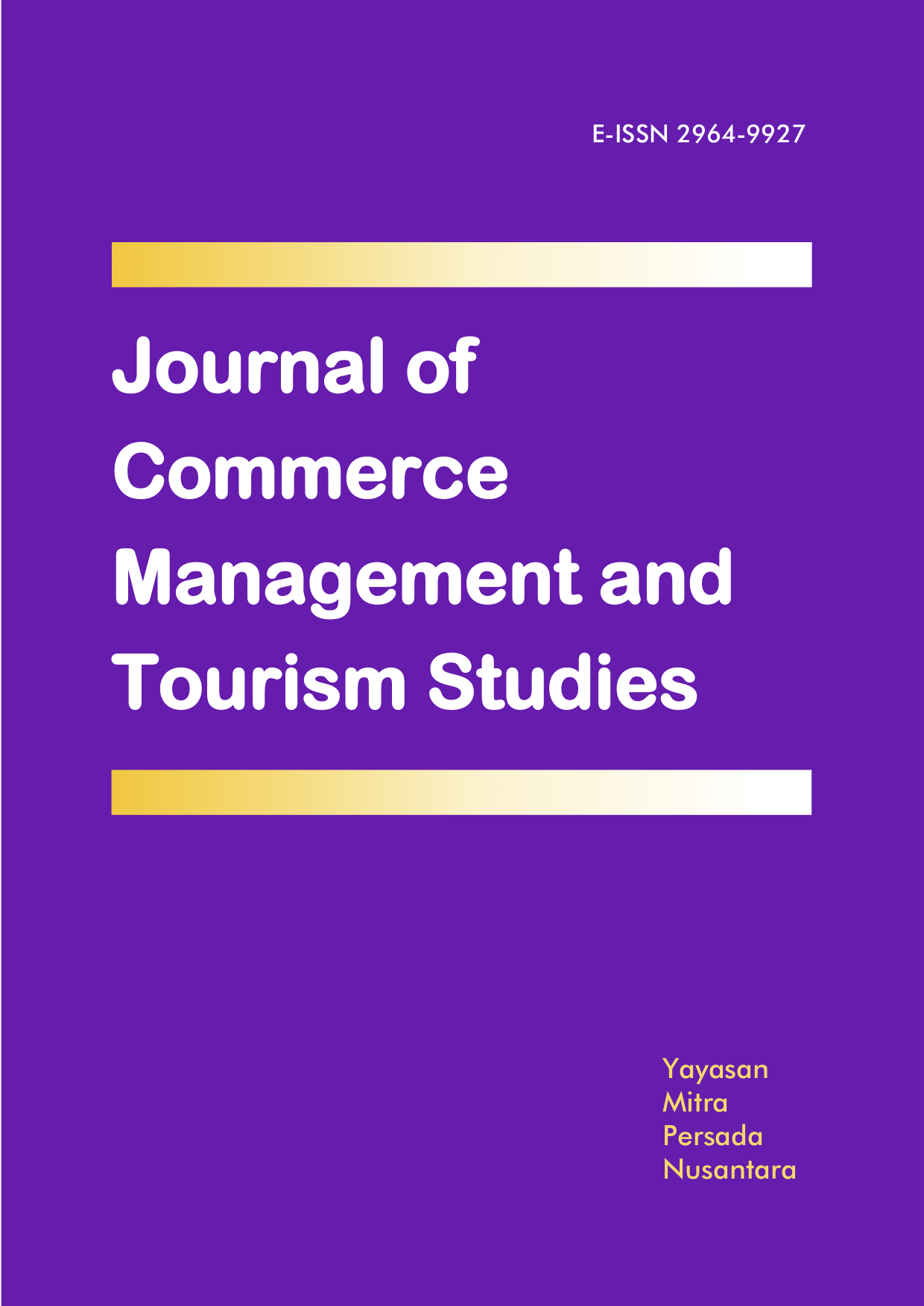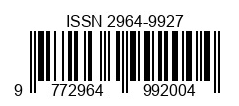Exploring hydrotourism: Health and wellbeing
DOI:
https://doi.org/10.58881/jcmts.v4i2.365Keywords:
Hydrotourism, Health and Wellness, Spa, Water-spring, melukat ritualAbstract
This emic study presents literature research of qualitative study on hydrotourism - health and wellness focusing on the practices and the uniqueness of the product offering around the globe highlighted with hydrotourism - health and wellness offered in Bali Indonesia. The findings show hydrotourism as a generic name represents three types of leisure and tourism products: water for sport, health and wellness, and for panoramic viewing experience. The current well developed and highly innovative products of hydrotourism - health and wellness around the world which could create a strong allegiance to particular destinations, has been known since the nomadic era. Bali offers high quality and variety of spa products that often offered by hotels or independents spa–establishment; it is noted that hydro for spiritual purification of ‘melukat-ritual’ is highly popular among tourists and become a substantial hydro product offer which is rooted from Hindu practice. Hydrotourism - health and wellness offer high variety and each with unique selling proposition. Hydrotourism – health and wellness could be in the form of bathing, spiritual purification, healing and rejuvenation, medication to relieve pain, detoxification and skin beauty, and a more complex spiritual ceremony of forging the endurance of body and mind; during the process, it could utilize various materials to assist healing, e.g. stone and herbs, or leveraging extreme temperature of warm and cold, often combined with yoga practice and meditation, also consuming healthy and whole food during the program; it could be an exclusive and luxurious for the rich, spa and wellness products for travelers, or simply public bathing where children and people could go to refresh; it could be well facilitated spa establishments with prime service or simply public baths, natural spring and thermal baths managed by local community. Indonesia considers spa services as traditional health services rather than entertainment.
Downloads
References
Bali Province. (2020). Perda No. 5 Tentang Standar Penyelenggaraan Kepariwisataan Budaya Bali.
Bandarhusin, Amanah. (2014). Daya Tarik Objek Wisata Air Panas Desa Banjar, Vol. 13 (2) Pp. 57-61
Cohen, E., & Cohen, S. A. (2015). A mobilities approach to tourism from emerging world regions. Current Issues in Tourism, 18(1), 11–43. https://doi.org/10.1080/13683500.2014.898617
Campón-Cerro, A. M., Di-Clemente, E., Hernández-Mogollón, J. M., & Folgado-Fernández, J. A. (2022). Olive oil tourism experiences: Effects on quality of life and behavioural intentions. Journal of Vacation Marketing, 29(3), 348-364. https://doi.org/10.1177/13567667221095592 (Original work published 2023)
Campón-Cerro, A. M., Di-Clemente, E., Hernández-Mogollón, J. M., & Folgado-Fernández, J. A. (2020). Healthy Water-Based Tourism Experiences: Their Contribution to Quality of Life, Satisfaction and Loyalty. International Journal of Environmental Research and Public Health, 17(6), 1961.
Darmawijaya, I. G., Tirtawati, N. M., Sekarti, N. K. (2018). The Typology of Wellness Tourism in Bali. 3rd International Conference on Tourism, Economics, Accounting, Management, and Social Science: Advances in Economics, Business and Management Research, 69. Atlantis Press.
Dewi, R. D. C. (2025). Development of Medical Wellness Based Health Tourism in Indonesia: Case Study of Traditional Medicine and Melukat Ritual in Bali.Journal of Multidisciplinary Science Vol. 2 No. 1, January2025, Pages. 281-289 P-ISSN: 3046-692X, E-ISSN: 3046-6911 DOI:10.59631/multidiscience.v2i1.333281
Folgado-Fernández, J. A., Di-Clemente, E., Hernández-Mogollón J. M., & Campón-Cerro, A. M. (2019). Water Tourism: A New Strategy for the Sustainable Management of Water-Based Ecosystems and Landscapes in Extremadura (Spain). Vol. 8(1), 2; https://doi.org/10.3390/land8010002
Global Wellness Institute (2021). Wellness Tourism Economy Report. https://globalwellnessinstitute.org
Global Spa Summit. (2011). Wellness Tourism and Medical Tourism: Where Do Spas Fit? Research Report: Global Spa Summit 2011. Retrieved from: https://globalwellnessinstitute.org/wp-content/uploads/2018/06/Wellness-Tourism-and-Medical-Tourism-Report-Final.pdf
Harianja, S. H., Antika, S., & Dewi, O. O. (2024). Melukat Sebagai Ritual Penyucian Diri Dalam Budaya Bali: Potensi Terapeutik Dalam Kesehatan Mental. Healthy Jurnal Inovasi Riset Ilmu Kesehatan 3(2):171-176. DOI:10.51878/healthy.v3i2.3440
Harahap, A., & Purba, J. (2021). Wellness Tourism and Sustainable Development: A Case Study in Bali, Indonesia. International Journal of Sustainable Development and Planning, 16(2), 287–293.
Hydro Health & Wellness Med Spa. (n.d.). About Hydro Health & Wellness. Retrieved from https://hydrohealthandwellness.com/about-hydro-health-and-wellness
Hoogland Health Hydro Lifestyle Medicine Institute. (n.d.). Home. Retrieved from https://hoogland.co.za/
Laura Andreea LAZĂR, L. A., CIUPE, I. A. (2017). The hydro-tourism potential of the Land of Beiuș. Babeș-Bolyai University, Faculty Of Geography, Cluj-Napoca, Romania. Doi: Https://Doi.Org/10.24193/AWC2017_55
Macfarlane, D. (2016). Fluid Meanings: Hydro Tourism and the St. Lawrence and Niagara Megaprojects. Histoire Sociale/Social History, XLIX (99)
Mahkamah Institusi. (2024). Keputusan Mahkamah Konstitusi No. 19/PUU-XXII/2024 tentang klasifikasikan spa dan mandi uap.
Nasermoaddeli, A., Kagamimori, S. (2005). Balneotherapy in medicine: A review. Environ Health Prev Med 10, 171–179 (2005). https://doi.org/10.1007/
Pyke, J., Hartwell, H., Blake, A., & Hemingway, A. (2016). Wellness tourism: A destination perspective. Tourism Management, 56, 94–105. DOI: 10.1016/j.tourman.2016.03.005
Rero, S. & Prayogi, P. A. (2023). Strategi Pengembangan Air Terjun Yeh Pikat Sebagai Daya Tarik Wisata Di Desa Taro Kabupaten Gianyar . Jurnal Daya Tarik Wisata (JDTW) Volume 5 nomor 2, Desember 2023, hal 25-29, p-ISSN: 2656-1816 e-ISSN: 3036-0940
Smith, M., & Puczkó, L. (2014). Health, Tourism and Hospitality: Spas, Wellness and Medical Travel. Routledge Second Edition ISBN 9780415638654. 544 Pages
Smith, M., & Puczkó, L. (2009). Health and wellness tourism. Elsevier/Butterworth-Heinemann.
Secara, M. 2011. A Statistic Analysis of Romanian Seaside Hydro Tourism. Annals of the University of Petroşani, Economics, 10(1), Pp. 327-334
Sood, S. (2012). The origins of bathhouse culture around the world. Retrieved from: https://www.bbc.com/travel/article/20121129-the-origins-of-bathhouse-culture-around-the-world
Sari, R. N., Nugroho, S. E., & Prasetyo, A. (2021). Pengembangan Hidroturisme Berbasis Sumber Daya Alam di Indonesia: Studi Kasus Garut dan Papua. Jurnal Pariwisata dan Ekowisata, 12(2), 85–95.
The Hydro Stellenbosch. (n.d.). Home. Retrieved from https://thehydro.co.za/
Valente-Pedro, C., de Matos, N., & Pinto, P. (2023). Holisticscape: The extended servicescape to influence tourists’ holistic health. Tourist Studies, 23(1), 3–24. https://doi.org/10.1177/14673584231210111
World Health Organization. (2020). Constitution of the World Health Organization.
Wellnesstourism. (n. d.). The Science of Wellness Tourism: Understanding the Benefits for Your Health. Retrieved from https://www.wellnesstourism.com/article/the-science-of-wellness-tourism-understanding-the-benefits-for-your-health
Worl Health Organisation. (1946). Constitute of World Health Organisation. Retrieved from: https://www.who.int/about/governance/constitution
Worl Health Organisation. (2020). Basic Document. (49th Edition). Retrieved from: https://apps.who.int/gb/bd/pdf_files/BD_49th-en.pdf
Zytka, M. J. (2013). Baths and bathing in late Antiquity. PhD Thesis, Cardiff University.
Downloads
Published
How to Cite
Issue
Section
License
Copyright (c) 2025 Ni Made Ernawati, I Gede Mudana, Putu Yunita Wacana Sari, Yayu Indrawati, Tyas Raharjeng Pamularsih

This work is licensed under a Creative Commons Attribution-NonCommercial-NoDerivatives 4.0 International License.














